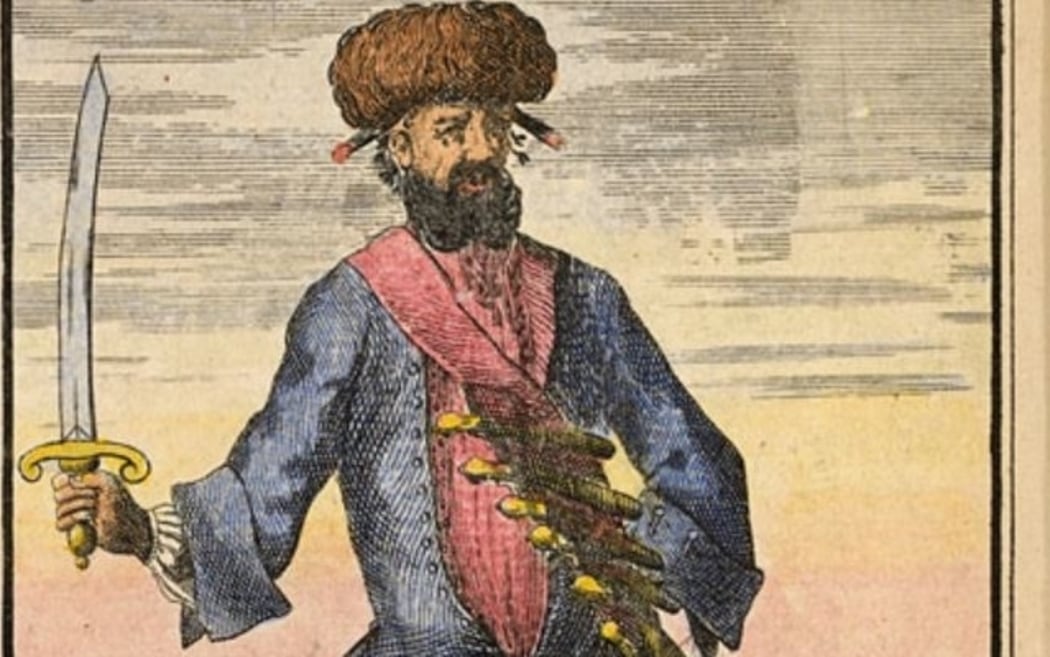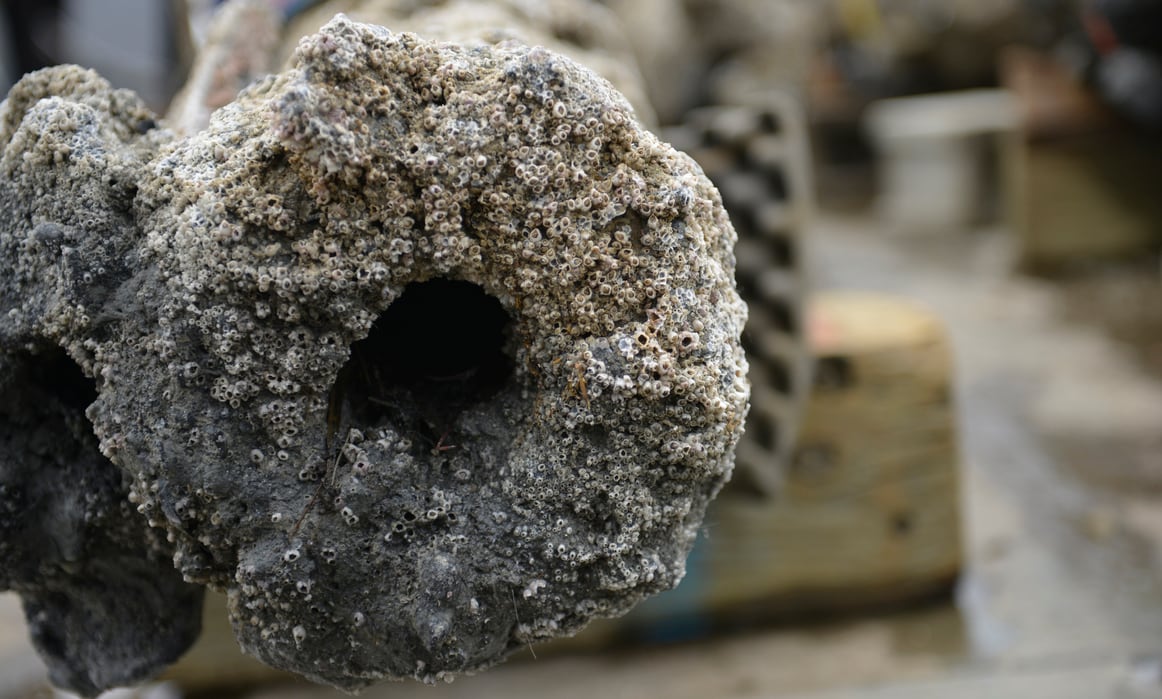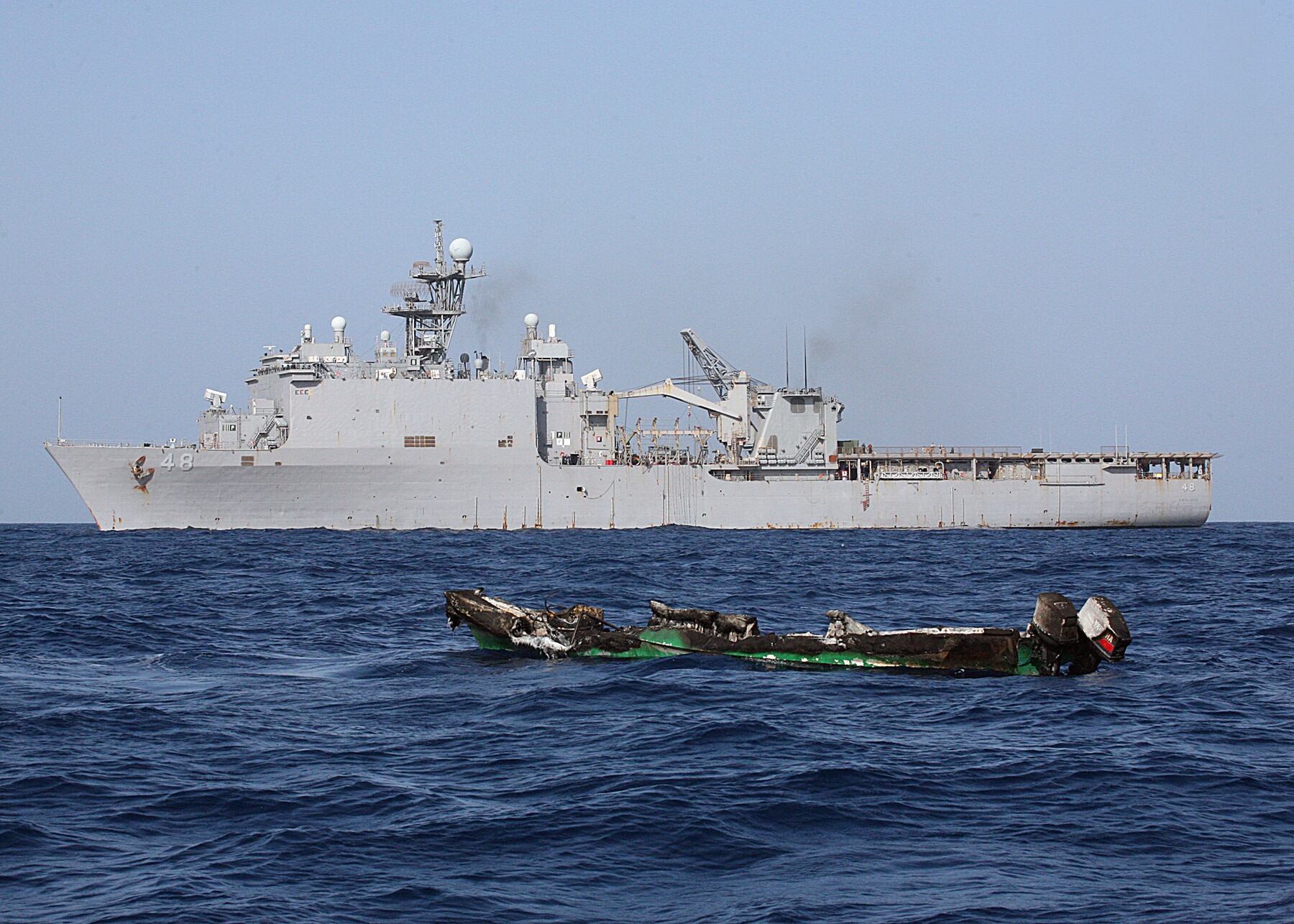MANTEO, N.C. — Blackbeard boarded Lt. Robert Maynard’s ship three centuries ago armed with pistols and a cutlass, ready to die before surrendering.
He fought viciously, but in less than 10 minutes on Nov. 22, 1718, Blackbeard and his crew were either dead or had surrendered. The tall, lean pirate known for his long beard tied with ribbons finally fell to the deck with five gunshot wounds and impaled 20 times by swords or knives.
Pirates like Blackbeard used an array of weapons to take their prey or battle enemies in a fight to the death. They fired their cannons — or guns as they were known — to warn rather than sink the ship. If the ship's crew wanted to fight, then so be it. A storm of violence would follow.
“It would be no holds barred,” said David Moore, curator for the North Carolina Maritime Museum in Beaufort.
A free traveling exhibit of artifacts from Blackbeard’s flagship, the “Queen Anne’s Revenge,” is on display at the ticket sales gallery at Roanoke Island Festival Park until May 31. The exhibit is from the North Carolina Maritime Museum, a division of the state’s Department of Natural and Cultural Resources.
Among the artifacts is a hand grenade, different sizes of musket balls and a replica of a large cannon found at the site where the ship sank off Carteret County near Beaufort Inlet.
RELATED

Research firm Intersal Inc. found the wreck in 1996 under a state permit. State divers began recovering artifacts in 1997 and have brought up more than 250,000 items over the years.
A storage and restoration lab was set up in Greenville. The traveling exhibit is made up of a few of the artifacts found.
The Queen Anne's Revenge was armed with up to 40 guns. Divers have recovered 24 cannons and mapped six others so far, Moore said. Blackbeard may have grounded the ship on purpose in June 1718. Her remains were discovered in 1996.
Maynard battled Blackbeard on a different ship in Ocracoke six months later.
The Queen Anne's Revenge began as a French slaving vessel; Blackbeard and his crew converted her into a fighting ship with a multitude of weapons.
For months he terrorized the Caribbean, raiding and taking prizes. In May 1718, he used four ships to block the harbor in Charleston, South Carolina, capturing vessels and taking prisoners as hostages until he was given a chest of needed medicines.
"She was essentially a war ship," Moore said.
Fighting and dying was not what pirates wanted to do unless forced to. They preferred to loot or capture ships and get away, not sink ships or kill people, Moore said.
At first they would approach a ship with a black flag flying, letting the quarry know to give up and that they would not be harmed, Moore said. Or, if needed, a pirate would fire a cannonball across the bow as a warning.
"They depended on shock and awe and hoped they would surrender," he said. "More often than not, they did."
If the ship decided to fight or run, the captain raised a red flag.
"That meant no quarter," Moore said

Cannons would fire a load of shot, nails, glass and whatever would fit into the barrel. Bar shot, which looked like a dumbbell, would rotate as it flew. Another destructive version sent two balls attached by a chain whirling through the air.
More than 35 complete or fragments of bar shot have been discovered at the Queen Anne’s Revenge site.
"Depending on the projectiles used, the guns could rip or tear sails, shred rigging, upend or overturn the prize's guns, send wooden splinters flying, and decapitate, maim, or severely wound the sailors on the prize," Cindy Vallar, a historian and librarian who keeps a website on pirates, said in an email.
Cannons were mounted on carriages and fired straight ahead. Smaller "swivel" guns fit on the deck railing and could be fired in different directions.
Pirates also fired flintlock shoulder weapons onto the other ship like a military sniper, taking out officers and other men. The blunderbuss fired a spray of shot similar to BBs. It was best used at close range.
When it came time to board, the attackers heaved hand grenades, hollow iron balls about the size of an orange filled with gunpowder and shot. The fuse was a hollow piece of wood. At least two dozen grenades have been found at the wreck site.
The grenades — or granados, Spanish for pomegranate — were effective but dangerous to use.
"I wouldn't want to be on the throwing end of one of those things," Moore said.
They also used what would today be a Molotov cocktail, a wine bottle filled with gunpowder, shot or glass. A piece of rope served as a fuse.
RELATED

Pirates boarded ready to battle with pistols, knives and cutlasses.
Pistols only fired one shot and took time to reload in the heat of battle. Many carried several pistols tied with ribbons around their necks. Pistols have been found on some wreck sites with pieces of ribbon still attached, Moore said.
Blackbeard was reported to carry six pistols.
Cutlasses were shorter, thicker and easier to use in cramped fighting conditions below deck or around ships lines and gear.
"The cutlass's short, sturdy blade was good for thrusting, slashing and chopping, and the user didn't need to be an expert swordsman to use it effectively," Vallar said.
Pirates lived a life more free than they might have been toiling on a merchant ship or in the Royal Navy, but that life often ended violently.
Blackbeard was only about 38 years old when Maynard and his men cut him down.




